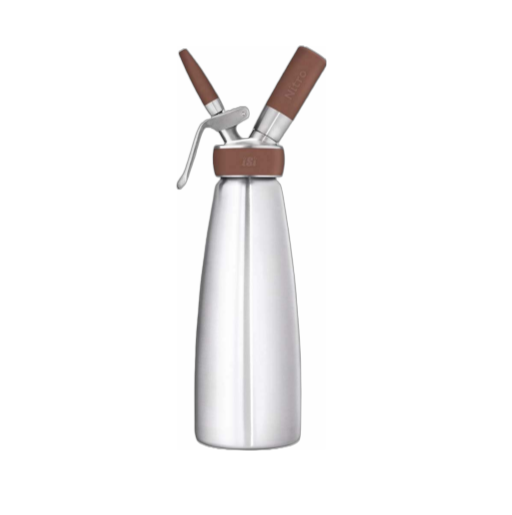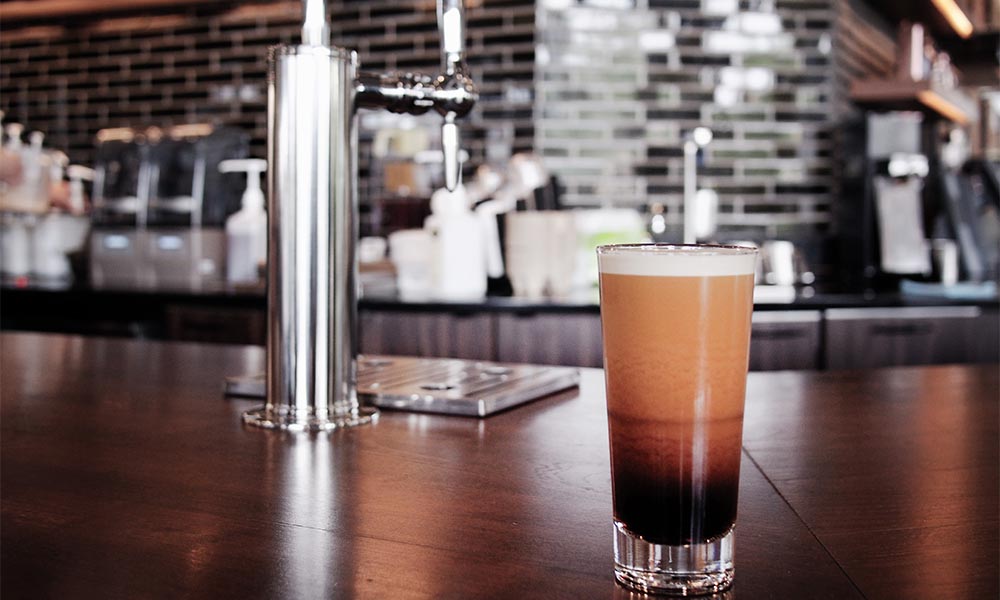
Nitro Cold Brew
Isi


In recent years a new trend has taken root in the coffee‑shop scene: nitro brew coffee.
A name that piques curiosity and a flavour that astonishes, thanks to an innovative preparation that blends science with tradition. But what makes nitro cold brew so special, and why are more and more cafés and roasteries choosing to serve it?
Nitro brew cold coffee stems from the evolution of cold brew – coffee extracted at low temperature that has already won fans over the years for its smooth, less acidic taste. The next step, however, was to introduce an element normally associated with beer: nitrogen.
The method involves infusing cold coffee with nitrogen (N₂) through a pressurised system similar to that used for stout beer kegs. This process gives the coffee a unique, creamy, velvety body without adding milk or sugar. Usually poured from a tap, nitro brew coffee has a dense, lingering head and an appearance reminiscent of a pint of Guinness.
The secret of nitro coffee’s success is the use of nitrogen, an odourless, tasteless gas which, once combined with coffee, dramatically alters the texture and sensory experience. Unlike carbon dioxide, which makes drinks fizzy, nitrogen forms ultra‑fine micro‑bubbles that don’t tingle on the palate but leave the drink silky.
Discover at CaffèLab the summer special of cold brew coffee: with its fresh, delicate texture it’s perfect for the hottest days of the year thanks to cold infusion. Our speciality coffees can satisfy even the most particular tastes and characteristics, creating countless sensory experiences and unique coffee blends.
Many baristas and coffee specialists point out that nitrogen infusion not only improves mouthfeel but also enhances certain flavour notes, especially the sweeter, toastier ones. The result is a more balanced drink, lower in acidity, rich in taste and often naturally sweet enough to need no sweetener.

Preparing nitro cold brew coffee starts with a long cold extraction, lasting anywhere from 12 to 24 hours. Ground coffee is left to steep in cold water, typically at a 1:8 ratio, to ensure a gentle extraction. Once filtered, the liquid is transferred to a sealed keg where it is saturated under nitrogen pressure.
Service is via a tap, as with craft beers, and the coffee is often poured straight into the glass without ice so as not to alter texture or temperature. To enrich the experience further, some baristas add natural flavourings or spices such as vanilla or cinnamon, always keeping the flavour in balance.
Beyond its visual appeal and distinctive taste, nitro brew coffee also offers nutritional benefits. Being free from sugar and milk, it’s an ideal choice for anyone on a low‑calorie diet or looking to cut down on sugar. Moreover, thanks to its caffeine content – often higher than an espresso – it’s an energising beverage, perfect for tackling busy days.
Recent studies, published in specialist trade journals, also confirm that cold extraction reduces the presence of certain bitter and acidic compounds, making nitro cold brew a sound alternative for those with gastric sensitivity.
Nitro brew coffee now takes centre stage in on‑trend cafés, third‑wave coffee bars and even some international chains. Its success comes not only from the novelty of the preparation but also from its ability to offer a multi‑sensory experience: from sight, with its captivating crema, to touch, with its velvety mouthfeel, right through to its full, enveloping taste.
We can say with total confidence that nitro brew coffee is a perfect example of how innovation and tradition can blend to create something new. A coffee that’s served cold – yet warms the passion of anyone discovering it for the first time.